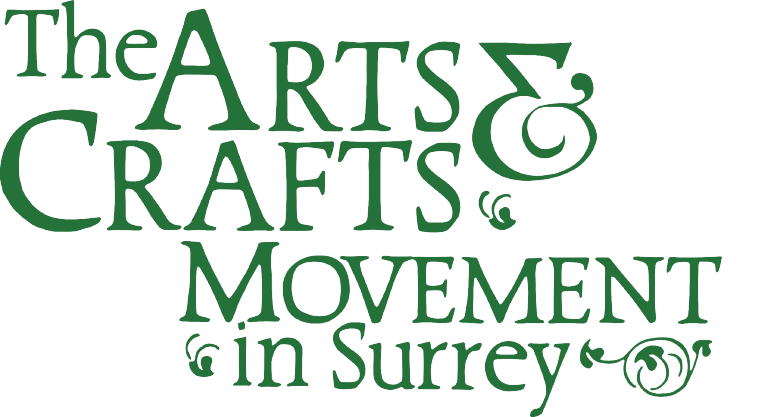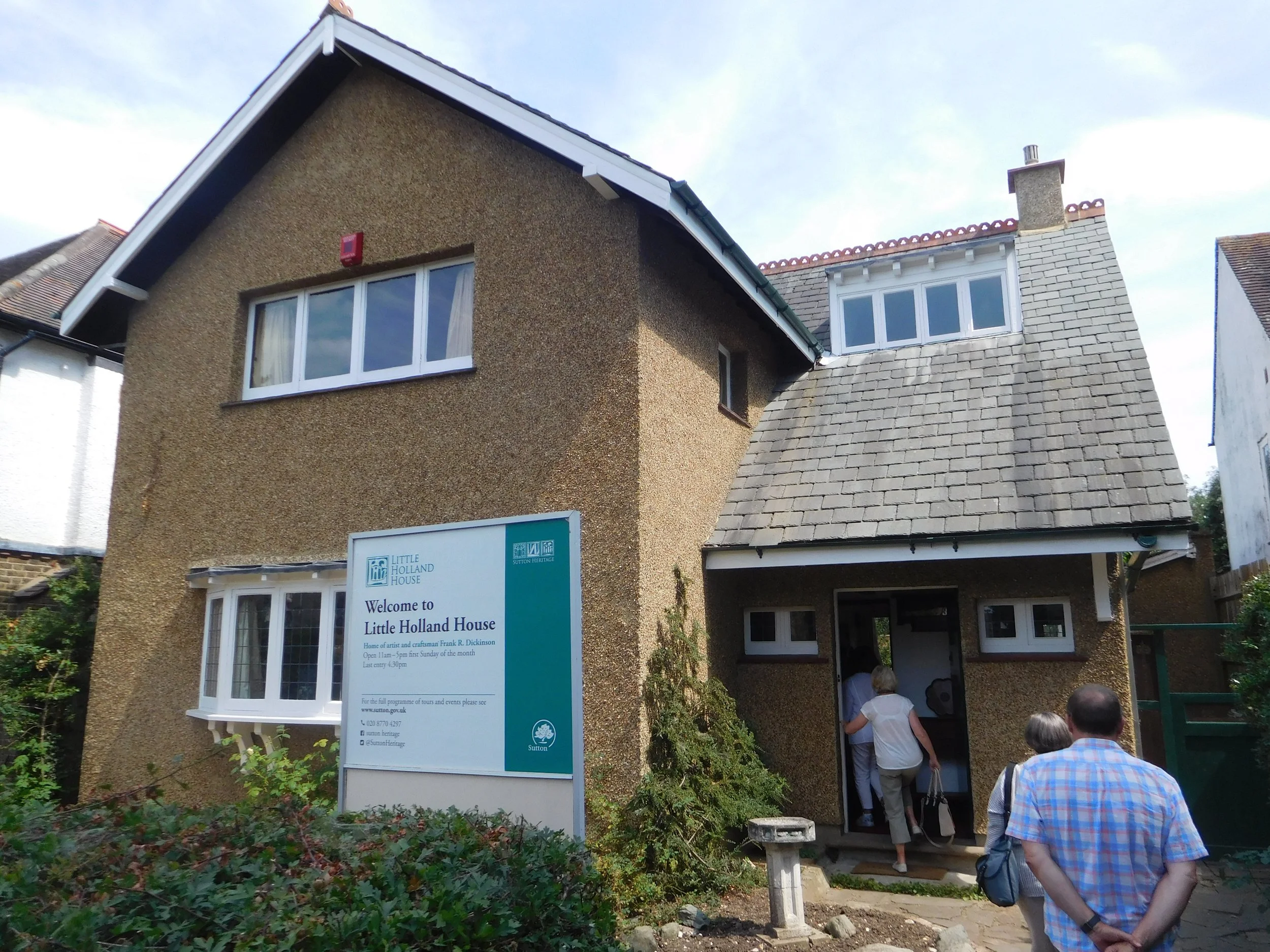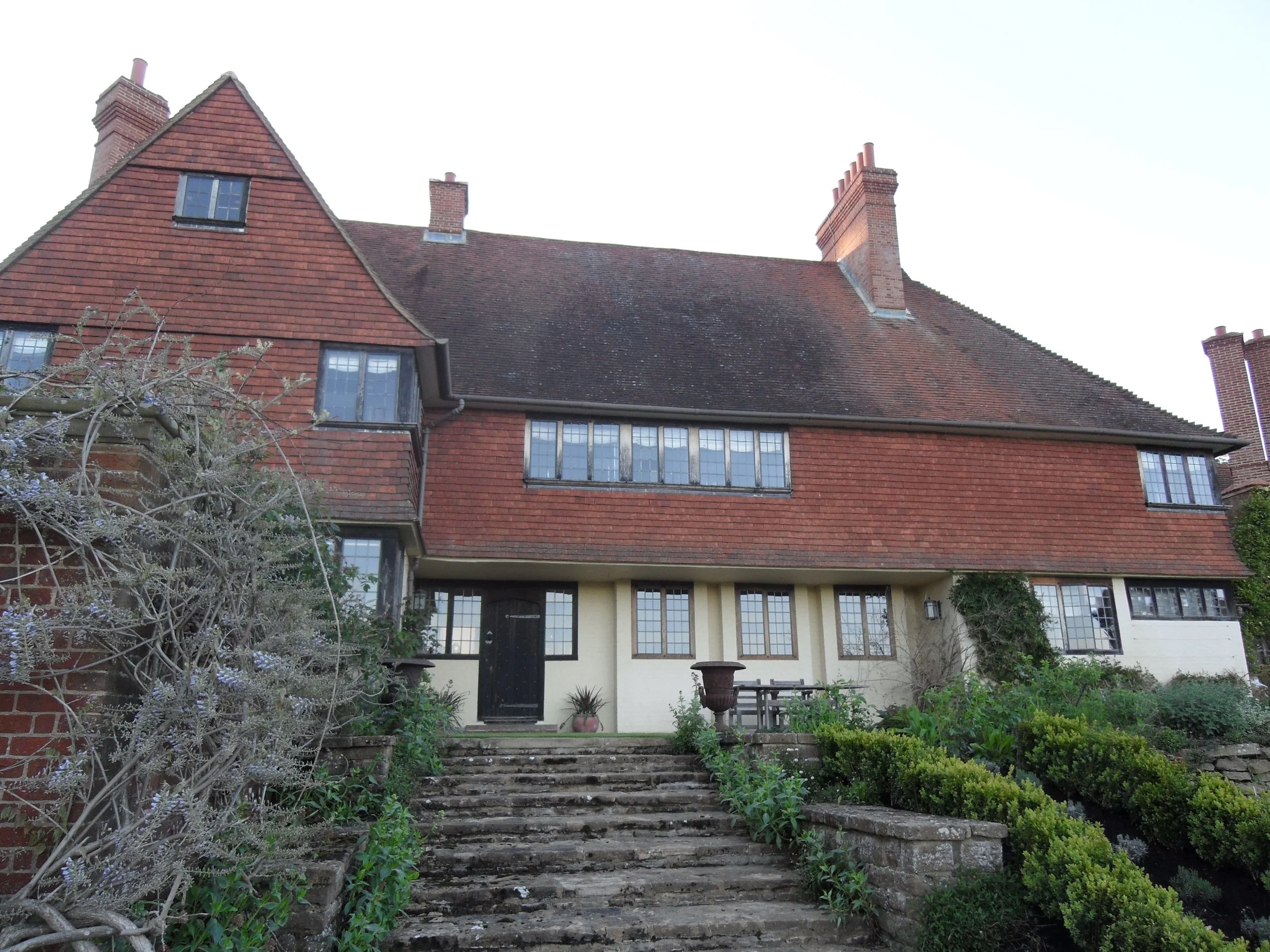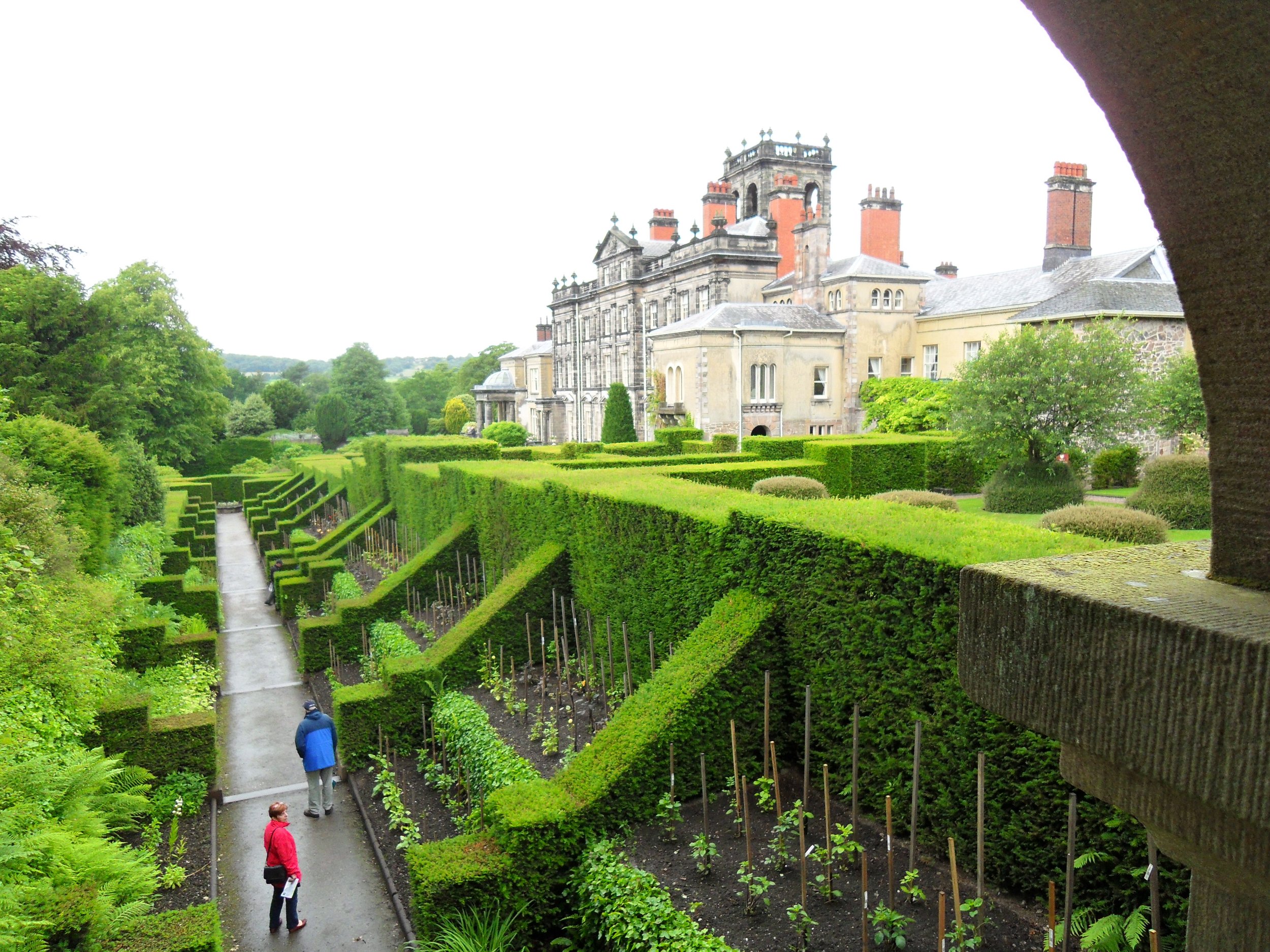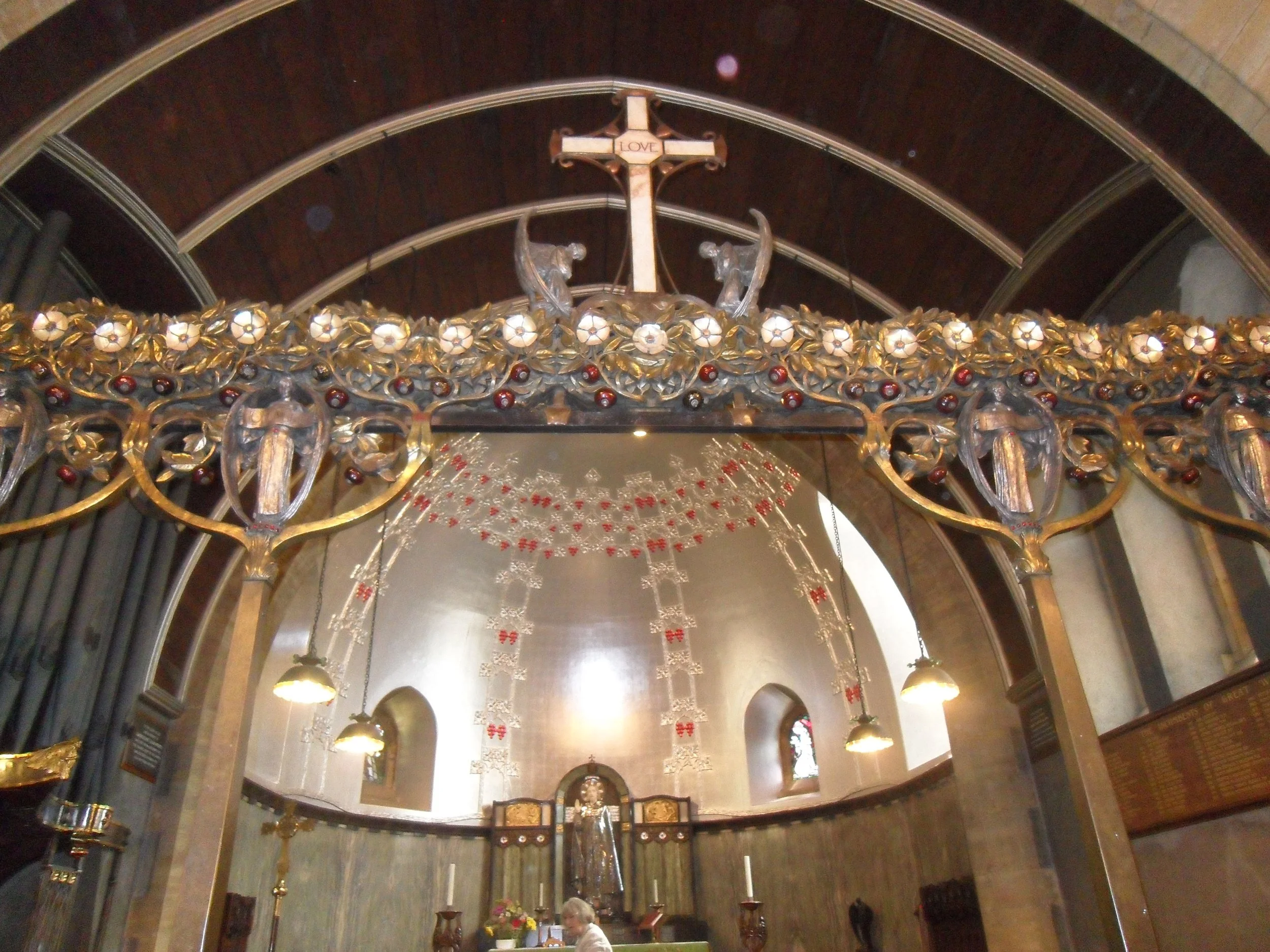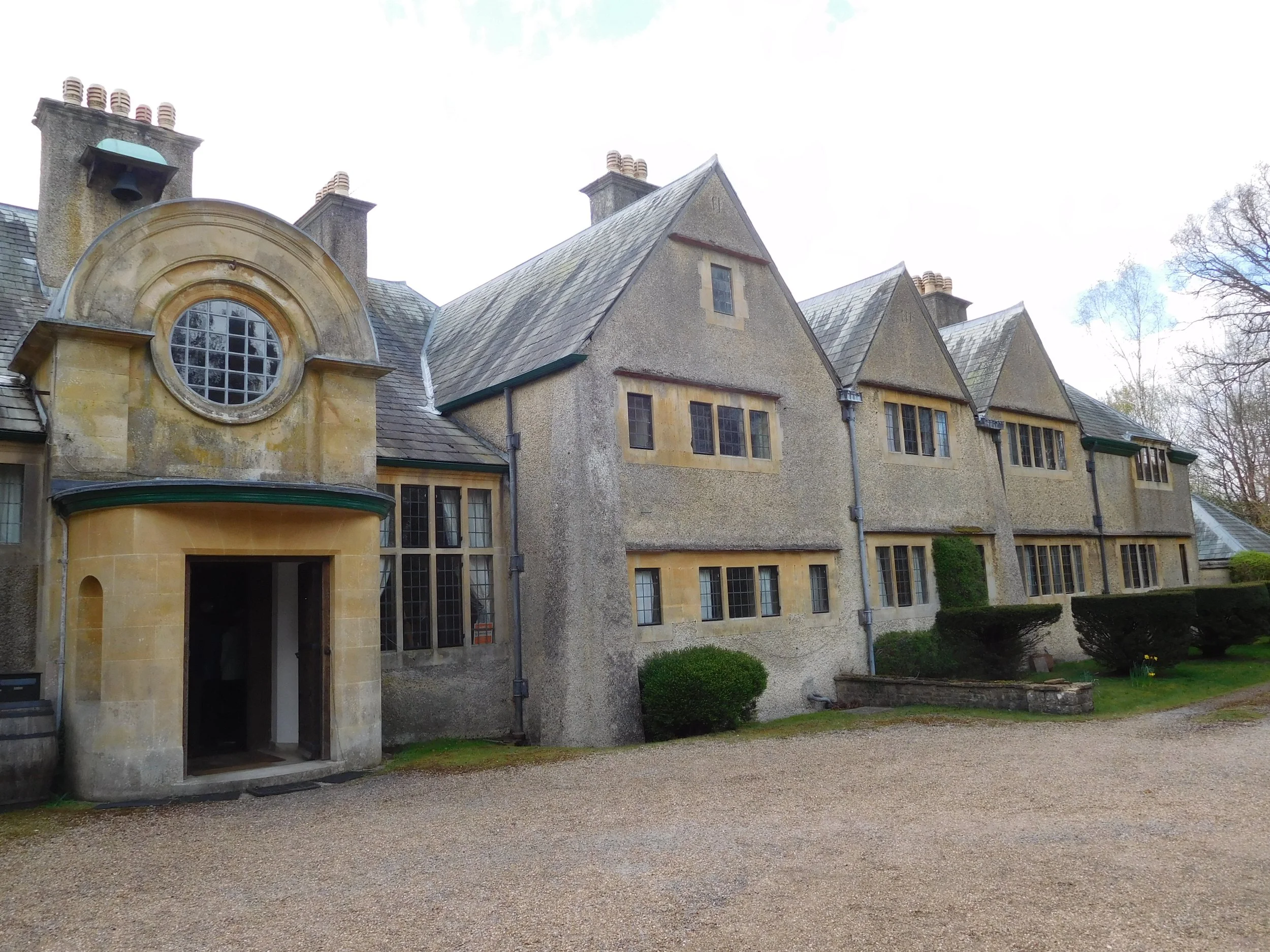ACMS EVENTS - 2007
The following lectures were presented during 2007
Timothy Wilcox – Beyond East and West: Bernard Leach and his influence
Alan Crawford – Nature and Belief: Churches of the Arts and Crafts Movement
Anne Anderson – The ‘Other’ Arts and Crafts Movement: the Home Arts and Industries Association
Neil Jackson – Arts and Crafts Architecture and the Idea of Savageness
Aileen Reid – Godwin the Architect: EW Godwin and the Architecture of Aestheticism
Morna O’Neill – “Art and Labour’s Cause is One” – Walter Crane
The following visits were made during 2007
Visit to Little Holland House & All Saints, Carshalton – Sunday 28 January 2007
Visit to the Voysey Studio, Hammersmith, with a lecture on Voysey by Ian Hamerton – Friday 16 March 2007
Visit to Lutyens’ Midland Bank, Poultry –Tuesday 27 March 2007
CH Townsend’s Church at Great Warley and walking tour of Gidea Park – Saturday 14 July 2007
Ditchling for Eric Gill exhibition – Thursday 27 September
Norney Grange, coffee morning – Saturday 13 October
The following events were held in 2007
AGM at the Tilford Institute & lecture by Michael Edwards – Thursday 17 May 2007
Goddards study day on Arts and Crafts gardens –Thursday 14 June 2007
LECTURES
Beyond East and West: Bernard Leach and his influence. Timothy Wilcox
Tuesday 23 January 2007
Born in Hong Kong and trained as a potter in Japan, Bernard Leach made it his life’s work to bridge the gulf between the cultures of Europe and Asia. But in so doing, did he become a true heir to the pioneers of the Arts and Crafts Movement? Or did his zeal as a populist distort out of all recognition the ideals he wanted to uphold? Timothy Wilcox, speaker on this occasion is a freelance museum curator and Associate Lecturer at the University of Surrey following a career as curator at the V&A, Walker Art Gallery, Hove Museum and Art Gallery and the British Museum.
Nature and Belief: Churches of the Arts and Crafts Movement Alan Crawford
Tuesday 27 February 2007
All Saints church, Brockhampton by William Lethaby
When we think of Arts and Crafts architecture, we usually think of houses, but churches such as Holy Trinity, Sloane Square, Brockhampton and Roker were among the finest creations of the movement. This lecture will take the form of a tour of Arts and Crafts churches in England and Scotland, exploring their decoration as well as the architecture, their meaning as well as their beauty.
The lecture will be given by Alan Crawford, a freelance scholar specialising in the history of the Arts and Crafts movement. For the past few years he has been working on Court Barn, Chipping Campden, a new museum of twentieth-century craft and design in the north Cotswolds.
The ‘Other’ Arts and Crafts Movement: the Home Arts and Industries Association Anne Anderson
Monday 19 March 2007
Compton Pottery
The standard works on the Arts and Crafts Movement usually focus on the Arts Workers Guild, the Arts and Crafts Exhibition Society and the leading architects and craftsmen such as Lethaby, Voysey or the Barnsleys. Yet the Home Arts and Industries Association was by far the largest organisation to promote the Arts and Crafts in the UK and even beyond. Despite its success, with over 100 classes formed, its efforts are often disregarded as amateur or the work produced of little consequence. The leading classes include Newlyn Copperwork, the Keswick Industrial Arts School and of course the Compton pottery. The Home Arts flourished in Surrey, Haslemere and Ashstead also developing into leading rural industries In this lecture Dr Anne Anderson, researcher, author and senior lecturer at Southampton Solent University will concentrate on why the Association came into being, ascertain its ‘mission’, discuss the leading players in its founding and offer reasons for its ‘neglect’.
Arts and Crafts Architecture and the Idea of Savageness Neil Jackson
Tuesday 23 October 2007
When John Ruskin published The Nature of Gothic in The Stones of Venice (1853) he promoted the idea that good architecture could only be achieved if the craftsman was free to express himself naturally; if the craftsman was a slave to the process, then the architecture was inevitably bad. From this concept developed the philosophy of the Arts and Crafts Movement. This lecture will look further into Ruskin’s thinking and examine buildings by leading Arts and Crafts architects including Philip Webb, William Richard Lethaby, Edward Schroder Prior, Edwin Lutyens and Frank Troup.
Our speaker, Neil Jackson, teaches at the School of Architecture, University of Liverpool, he trained as an architect and is an author of architectural books including FW Troup, Architect, a contributor to edited books, journals and television programmes and curator of exhibitions on architectural subjects.
Godwin the Architect: EW Godwin and the Architecture of Aestheticism Aileen Reid
Wednesday 21 November 2007
EW Godwin is best known today as Ellen Terry’s lover and as the designer of delicate Anglo-Japanese furniture, but he always saw himself first and foremost as an architect. His work evolved from the Gothic Revivalism of the 1850s and early 1860s to the strikingly stark artists’ studio-houses (including Whistler’s) in Chelsea of the 1870s and 1880s. This talk by will look at the common themes that run through Godwin’s work from the beginning, as well as his artistic milieu in bohemian London.
Lecturer, Aileen Reid is an architectural historian with English Heritage working on the Survey of London, begun by CR Ashbee in the 1890s. She did her PhD at the Courtauld Institute of Art on the architecture of EW Godwin and subsequently wrote a history of the arts and crafts settlement of Brentham in Ealing. Since 2001 she has been consultant curator at 7 Hammersmith Terrace, home to William Morris’s friend and printing mentor, Emery Walker.
“Art and Labour’s Cause is One” – Walter Crane Morna O’Neill
Wednesday 5 December 2007
Walter Crane (1845-1915) was one of the most important, versatile and radical artists of the 19th century, a painter, decorator, designer, book illustrator, poet, author, teacher, art theorist, and socialist. His astonishingly diverse body of work challenged the artistic and political establishment of his time. This talk provides an introduction to the magnificent breadth of Crane’s artistic practise and explores the way in which his art expressed the revolutionary power of creativity and beauty, and gave voice to his hope for a better world.
The lecture will be given by Morna O’Neill, Assistant Professor of Nineteenth-Century European Art, Vanderbilt University, Nashville, a writer and curator who is visiting England for the exhibition on Walter Crane that she is currently curating which is to be held at the Whitworth Art Gallery in 2008.
VISITS AND EVENTS
A visit to Little Holland House and the Church of All Saints, Carshalton
Sunday 28th January 2007 1.30 pm
This event will start at the Church of All Saints, which although dating from medieval times, provides an opportunity to view the work of Sir Arthur and Sir Reginald Blomfield, described by Pevsner as ‘a lively composition’. There are internal furnishings and striking decorations by church architect G.E. Bodley and Sir Ninian Comper, who was the leading ecclesiastical designer of the first half of the twentieth century. Dr John Thewlis, the Vicar, has kindly offered to give a talk about the Church.
Little Holland House was the home of Frank Dickinson (1874 – 1961), a follower of William Morris and John Ruskin and influenced by the Arts and Crafts Movement, Dickinson was an artist, designer and craftsman in wood and metal who built the house himself, with his own hands and to his own design, in pursuance of his philosophy and theories. The house has a Grade II listed interior and notable features include the master bedroom with a painted frieze, caned timbers in the living room, decorated fireplace surrounds and original furniture. Curator, Valary Murphy will give an introductory talk and there will be a tour of the house, the remarkable achievement of Dickinson’s vision of “a house with beautiful things inside, a house solid looking and not showy”.
VISITS AND EVENTS
A visit to Little Holland House and the Church of All Saints, Carshalton
Sunday 28th January 2007 1.30 pm
Little Holland House
This event will start at the Church of All Saints, which although dating from medieval times, provides an opportunity to view the work of Sir Arthur and Sir Reginald Blomfield, described by Pevsner as ‘a lively composition’. There are internal furnishings and striking decorations by church architect G.E. Bodley and Sir Ninian Comper, who was the leading ecclesiastical designer of the first half of the twentieth century. Dr John Thewlis, the Vicar, has kindly offered to give a talk about the Church.
Little Holland House was the home of Frank Dickinson (1874 – 1961), a follower of William Morris and John Ruskin and influenced by the Arts and Crafts Movement, Dickinson was an artist, designer and craftsman in wood and metal who built the house himself, with his own hands and to his own design, in pursuance of his philosophy and theories. The house has a Grade II listed interior and notable features include the master bedroom with a painted frieze, caned timbers in the living room, decorated fireplace surrounds and original furniture. Curator, Valary Murphy will give an introductory talk and there will be a tour of the house, the remarkable achievement of Dickinson’s vision of “a house with beautiful things inside, a house solid looking and not showy”.
Designed by CFA Voysey: a Painter’s Studio & an Artist’s House
Friday 16th March 2007 11am – 5pm
This event features two almost contemporary early works by the architect CFA Voysey, The first to be visited is a studio with minimal living accommodation in Hammersmith, designed in 1891 for artist WEF Britten. It is now a Grade II listed building occupied by the Hungarian Reformed Church and undergoing restoration.
We have arranged for a lecture entitled Head, Hand, Heart: the Genius of CFA Voysey exploring the decorative designs of the architect. The lecture will be given by Ian Hamerton, Senior Lecturer in Organic Chemistry, Vice-Chairman of the Society and editor of WAS Benson Arts and Crafts luminary and Pioneer of Modern Design. Ian formerly lived in a lodge designed by Voysey.
After lunch we will tour the studio guided by Tim Bruce-Dick, architect for the restoration. He will concentrate on the architectural features and history of the building, and will talk about Voysey’s artist client, the present owners and interesting aspects of the restoration. Tim is an architect in private practice in London specialising in domestic projects and restoration. A University lecturer in architecture he leads architectural walks round London and organises Architectural Tours world wide.
With the kind permission of the owner, we also have an opportunity to visit ‘An Artist’s House’ in Bedford Park, Chiswick that was designed by Voysey in 1891 for Mr SW Forster. It bears resemblance to unexecuted designs of 1889 for a ‘tower house’ and ‘demonstrates Voysey’s authentic radicalism’ according to Stuart Durrant in his Architectural Monograph on Voysey.
Lutyens’ Midland Bank at Poultry and The Blackfriars Pub
Tuesday 27th March 2007 12:00 – 16:00
Sir Edwin Lutyens (1869-1944) is often described as the greatest British architect of his age. His prolific career encompassed manifest numbers of country houses, fine commercial buildings, and monuments. That Lutyens was a designer of furniture is not well known. His designs, though numerous, were always produced in small quantities and for a specific effect that was always a complement to the whole. Sadly, almost none of Lutyens’ interiors survive intact and many pieces of furniture have been lost. This is a rare opportunity to see one of his commercial buildings and the interior and furniture designed for it. Poultry was built between 1921 and 1939 (extensions 1935-1937) as the head office for Midland Bank and was used until 2002. It occupies just under an acre of prime real estate next to the Bank of England, in the City of London. The building has now been sold with a view to redevelopment and this might be the last chance to see the harmonious design as it was intended. In particular, we shall view the double height marble-lined banking hall, oak panelled directors’ offices and the board room, dining room and library. The furniture includes chairs, tables and hat and umbrella cupboards also designed by Lutyens.
We are most grateful to Society member, Richard Hennessy who has made this event possible and who will be our guide for the tour of Poultry.
Lunch will be held before the visit at The Blackfriars public house at Blackfriars, a 1 minute walk from Poultry passing St Paul’s Cathedral and other famous city sights. The Blackfriars is a cheat, but an honest cheat, as the almost mediaeval appearance is an early 20th century Arts and Crafts extravaganza of mosaics, metalwork and enamels on the site of an ancient priory. After the visit to Poultry you could visit the Monument which was built to commemorate the Great Fire which devastated the City of London in 1666.
Annual General Meeting and lecture
Thursday 17 May 2007 – 7:30pm
At the Tilford Institute.
It is hoped that you will be able to attend and contribute to the future plans of the Society. Four Council members retire this year, all of which have indicated their willingness to stand for re-election. The post of Minutes Secretary is vacant and members are invited to contact the Hon. Secretary to discuss what is involved in taking on responsibility for this position. Nominations for election should be signed by the proposer, and seconder who should also be members of the Society, and should be signed by the nominee signifying his/her willingness to serve if elected. Nominations should be returned to the Hon. Secretary by Monday 14 May. The Chairman may invite nominations from the floor at the Annual General Meeting in the event of there being insufficient nominations.
To celebrate 10 years of the Society’s existence, a complimentary glass of wine and cake will be served in the interval between the AGM and the lecture at 8.30pm.
Lutyens’ work 100 years on – Undoing the makeovers
Sullingstead
an illustrated lecture by Michael Edwards, Architect and Council Member. Michael and Frances Edwards have worked on Hoe Farm and Tilford Institute – both being amongst Lutyens’ earliest commissions – Orchards, Marshcourt and Little Thakeham and are now working on Sullingstead and Ednaston, all with their own problems… some through Lutyens’ design decision-making and others resulting from successive owners’ attention to the fabric. They have learned a lot about traditional building and have uncovered some fascinating details, like lost foundations of unbuilt buildings. All these details are well recorded and are the subject of this talk.
Enduring Gardens – A study day at Goddards, Abinger Common
Thursday 14th June 2007 10:30 – 17:00
Biddulph Grange
The Lutyens Trust have once again kindly agreed that the Society may run an event at Goddards during their summer week at the house. Sir Edwin Lutyens designed Goddards for Sir Frederick Mirrielees, in 1898-1900, as a place where ‘Ladies of Small Means’ might rest and enjoy the wonderful courtyard garden planted by Gertrude Jekyll. Goddards was given to the Lutyens Trust in 1991 and has been expertly restored by the Landmark Trust. With the garden at Goddards as a backdrop, the theme for the study day is gardens and the enduring legacy of gardens of the Arts and Crafts Movement. During the day there will be time to explore the house and garden.
The development of garden room – from Biddulph Grange to Scampston
The morning lecture will be given by Jane Balfour and will take us on a journey of exploration from Biddulph Grange, one of the earliest of nineteenth century gardens to contain significant compartments, to the most modem of plantings by Piet Oudolf in the twenty-first century at Scampston Yorkshire, en route appreciating how the great garden designers of the Arts and Crafts Movement still exert their influence in our modest gardens of today. Jane Balfour is a member of the Society, a garden historian and experienced lecturer on late nineteenth and early twentieth century garden history including for the National Trust, NADFAS and both Reading and Surrey Universities.
Harold Peto (1854-1933): Architect and Garden Designer
In the afternoon, Robin Whalley will lecture on the subject of his newly published book. During the last quarter of the nineteenth century Peto travelled abroad – France, Italy, Spain, America and Japan – and his experiences of foreign culture were often the inspiration for his garden designs. This lecture will give a summary of his early life as an architect before focussing on some of the important commissions to examine the underlying aspirations of his vision. The analysis will emphasise the importance of documentation in trying to understand his particular view of the past. Robin Whalley is a well-known authority on Victorian and Edwardian gardens, and the work of Harold Peto in particular. He received a fellowship from Harvard University to research at Dumbarton Oaks, Washington DC, in 1994, and is now a part-time lecturer at Cardiff and Bristol Universities.
St Mary the Virgin at Great Warley and Gidea Park – The Romford Garden Suburb, Essex
Saturday 14th July 2007 10:30 – 16:30
St Mary the Virgin, Great Warley
“One of the most exciting Arts and Crafts interiors in England. A wondrous church” Simon Jenkins England’s Thousand Best Churches
This event will start with a visit to the Church of St. Mary the Virgin, the Parish Church at Great Warley. The church and lychgate were designed and built by Charles Harrison Townsend in 1902-04 and the church interior was mostly designed by William Reynolds-Stephens. The church was financed by Mr Evelyn Heseltine, a successful City stockbroker, in memory of his brother who died in 1897 aged 45. The design of the church was based on St. Peters at Hascombe, south of Godalming (by Henry Woodyer) which Heseltine had admired. Peter Proud, the Church Warden and his deputy, George Dipper, who are both knowledgeable and enthusiastic about the design of the interior of the church and its symbolism will be our guides and Sarah Sullivan, our own “in house” expert on Charles Harrison Townsend, will also talk to the group.
During lunch we will have the opportunity to walk around the garden at Warley Place. Warley Place – the house is long demolished – was formerly the home of Miss Ellen Willmott, one of the most famous women gardeners, who died in 1934. A keen horticulturist, she introduced many exotic plants to Warley. Today Warley Place is leased and managed by the Essex Wildlife Trust as a nature reserve.
Gidea Park
For the afternoon we travel some 5 miles west to Gidea Park. The Suburb was started in 1910, promoted by three Liberal MPs who had links with Hampstead Garden Suburb. By 1911 the Suburb contained 359 houses and cottages, mostly in the vernacular style, which had been built for an exhibition/competition to find the best designs for houses costing £500 and cottages costing £350, The houses were designed by more than 100 architects including Parker and Unwin, Baillie Scott and Clough Williams-Ellis. The Suburb contains several listed buildings and was designated a Conservation area in 1970. A two-hour walking tour will be led by Mrs Joyce Leicester, Secretary of The Gidea Park and District Society since 1982. Joyce is very knowledgeable about the history and architecture of the Suburb and her Society is diligent in the preservation of its character.
Eric Gill and Ditchling, East Sussex
Thursday 27th September 2007 2.30 – 5 pm
War Memorial, Ditchling
It is 100 years since Eric Gill (1882-1940) moved to Ditchling in Sussex where, arguably, he spent his most creative years. Ditchling Museum is currently holding an exhibition Eric Gill and Ditchling: The Workshop Tradition which explores how the village transformed Gill’s life and work, and examines Gill’s importance to the modern art movement in the early twentieth century, revealing how his traditions lived on in Ditchling through his assistant, Joseph Cribb. Following an introductory talk by the Museum’s Curator Hilary Williams, members of the Society will have an opportunity to look around the exhibition. We will also visit the Church of St Margaret and the War Memorial to study further work by Gill and his group.
Ditchling Museum holds a collection of work of members of the Guild of St. Joseph and St. Dominic, founded by Eric Gill and Hilary Peplar, with examples by Ditchling artists and craftsmen and women including artist Frank Brangwyn, weaver Ethel Mairet, poet David Jones and silversmith Dunstan Pruden.
A visit to Norney Grange, Shackleford
Saturday 13th October 2007 10:30 – 12:30
Norney Grange
By kind invitation of the owners, we shall hold a coffee morning at Norney Grange. Charles F.A. Voysey (1857-1941) is considered to be one of the foremost architects of the Arts and Crafts Movement. His influence was international in its scope and his name is also connected with the origins of the Modern Movement. Voysey designed Norney Grange in 1897 for the Reverend Leighton Grane, with a later extension in 1903 for the second owner.
Ian Hamerton will give an introductory presentation on Voysey, drawing some comparisons between Norney Grange and other buildings by Voysey. Ian is Vice-Chairman of the Society and is editor of WAS Benson Arts and Crafts Luminary and Pioneer of Modern Design; he formerly lived in the Lodge at Norney Grange. Russell Clapshaw will lead members on a guided tour of the house, which retains its original architectural features and members will be able to view the Voysey summerhouse and sundial in the garden.
